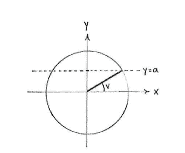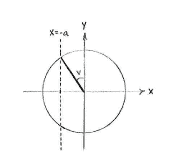Solution 4.3:3e
From Förberedande kurs i matematik 1
(Difference between revisions)
m (Robot: Automated text replacement (-[[Bild: +[[Image:)) |
m |
||
| (3 intermediate revisions not shown.) | |||
| Line 1: | Line 1: | ||
| - | + | The angle <math>\pi/2+v</math> makes the same angle with the positive ''y''-axis as the angle ''v'' makes with the positive ''x''-axis, and hence we see that the ''x''-coordinate for <math>\pi/2+v</math> is equal to the ''y''-coordinate for ''v'', but with a change of sign, i.e. | |
| - | < | + | |
| - | + | ||
| - | [[Image:4_3_3_e.gif|center]] | + | {{Displayed math||<math>\cos \Bigl(\frac{\pi}{2}+v\Bigr) = -\sin v = -a\,\textrm{.}</math>}} |
| + | |||
| + | {| align="center" | ||
| + | |align="center"|[[Image:4_3_3_e-1.gif|center]] | ||
| + | |align="center"|[[Image:4_3_3_e-2.gif|center]] | ||
| + | |- | ||
| + | |align="center"|<small>Angle ''v''</small> | ||
| + | |align="center"|<small>Angle π/2 + ''v''</small> | ||
| + | |} | ||
Current revision
The angle \displaystyle \pi/2+v makes the same angle with the positive y-axis as the angle v makes with the positive x-axis, and hence we see that the x-coordinate for \displaystyle \pi/2+v is equal to the y-coordinate for v, but with a change of sign, i.e.
| \displaystyle \cos \Bigl(\frac{\pi}{2}+v\Bigr) = -\sin v = -a\,\textrm{.} |
| Angle v | Angle π/2 + v |


